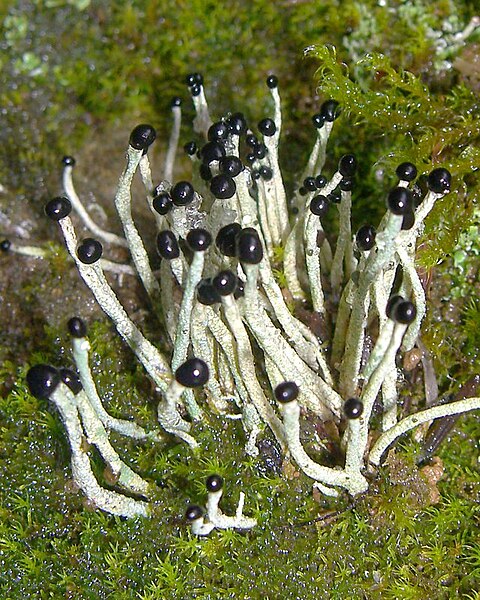Pulchrocladia retipora, commonly known as the coral lichen, is a species of fruticose lichen in the family Cladoniaceae. Found predominantly in Australasia, its habitats range from the Australian Capital Territory to New Zealand's North and South Islands, and even the Pacific region of New Caledonia, where it grows in coastal and alpine heathlands. The lichen features coral-like branches and subbranches with numerous intricate, netlike perforations. It is known by multiple names, with some sources referring to it by its synonym Cladia retipora, or the common name lace lichen.
Pulchrocladia retipora
Closeup of highly perforated podetia, with dark reddish brown-coloured apothecia at the end of some branchlets
Pulchrocladia retipora in its native habitat
Pulchrocladia retipora is depicted in the top row, centre, of Ernst Haeckel's chart of lichens first published in his 1904 work Kunstformen der Natur ("Art Forms of Nature").
The Cladoniaceae are a family of lichen-forming fungi in the order Lecanorales. It is one of the largest families of lichen-forming fungi, with about 560 species distributed amongst 17 genera. The reindeer moss and cup lichens (Cladonia) belong to this family. The latter genus, which comprises about 500 species, forms a major part of the diet of large mammals in taiga and tundra ecosystems. Many Cladoniaceae lichens grow on soil, but others can use decaying wood, tree trunks, and, in a few instances, rocks as their substrate. They grow in places with high humidity, and cannot tolerate aridity.
Cladoniaceae
In Cladonia coccifera, the conidia are embedded in a scarlet-coloured slime on the margins of the scyphi (cups).
Pilophorus acicularis
Pycnothelia papillaria








